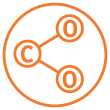Trackable waste recovered
Key Finding
Putrescible and organic wastes made up 37% of trackable wastes recovered for recycling, reclamation, direct re-use or alternative use in Queensland in 2018–19.
Queensland's waste tracking laws regulate the transport of environmentally significant waste. Trackable wastes are regulated wastes generated from commercial and industrial activities and are listed in Schedule 11 of the Environmental Protection Regulation 2019.
Waste generators, waste transporters and waste receivers have specific obligations when handling regulated waste and trackable wastes, to ensure regulated wastes are appropriately transported and managed and do not cause environmental harm.
Not all trackable regulated wastes are suitable for recovery due to their hazardous nature. Nonetheless, 733,364 tonnes of trackable regulated waste was recovered in 2018–2019. This is an 18% increase on the previous year.
The most recovered trackable regulated wastes are:
- putrescible and organic wastes (38%)
- alkaline wastes (20%)
- oils and hydrocarbons (18%).
The recovery of miscellaneous waste (18%) has increased by approximately 80% since the 2017–2018 financial year. Tyres account for more than 99% of all miscellaneous waste recovered in 2018–19.
More information:
Relevant Sustainable Development Goals’ targets
Download data from Queensland Government data
Metadata
Tonnage of trackable waste recovered under treatment codes prescribed in Schedule 17 of the Environmental Protection Regulation 2019 for each period from 2016–2017; 2017–2018 and 2018–2019, by waste description and category. Treatment codes do not align with Queensland’s Waste Management and Resource Recovery Strategy. Assumptions have been made regarding treatment codes in relation to waste recovery. Due to the manual verification requirements associated with the receipt and processing of paper waste tracking certificates and a current processing backlog, the data used for these figures is based on an incomplete data set. Consequently, assumptions have been made to draw conclusions from the data, including weight conversion.









